
The New American Vortex: Explorations of McLuhan
by Andrew Brian Chrystall
Mr. Chrystall’s study revisits the work of H. Marshall McLuhan by re-reading McLuhan’s oeuvre on his own terms and in light of newly unearthed primary source material. Through the lens of his career-spanning concern with communication, McLuhan is seen as transforming the great tradition of Ciceronian humanism and the Ciceronian ideal(the figure in whom eloquence and wisdom coalesce), and the programme of the Anglo-American Modernists: James Joyce, Ezra Pound, T. S. Eliot, and P. Wyndham Lewis. In the final analysis, McLuhan is re-envisioned as a singularity - a paramodern (neither modernist nor post-modernist) doctus orator.

INTRODUCTION 1
MCLUHAN ON MCLUHAN 14
CAREER OF A NEO-RENAISSANCE MAN 21
MCLUHAN DESCENDING A STAIRCASE 25
RECONSTRUCTION (1911–1951) 36
MEREDITH AND CHESTERTON 37
MCLUHAN’S FIRST “GREAT LABOUR” 40
CICERONIAN IDEAL 47
TRIVIUM 49
DESPOTIC POWER OF ART 55
SCHOOL MASTER OF NORTH AMERICA 63
ENTER THE MAELSTROM 68
LEAVIS AND GIEDION 70
WYNDHAM LEWIS 76
ANALOGICAL SYNTHESIS 83
CHALLENGE AND COLLAPSE 97
LIFE AS ARTFORM 100
A DUET IN EVERYTHING 107
THEORY OF COMMUNICATION? 112
RESURRECTION (1951–1957) 118
IMPACT NIL! 120
THE CIRCASSIAN HORSEMAN 124
NETWORK 129
JAMES JOYCE 134
IDEAS CONSULTANTS 136
CULTURE AND COMMUNICATION SEMINAR 141
SPACE, TIME, EYE, AND EAR 145
LIGHT ON AND LIGHT THROUGH 150
DIALOGUE 152
ORGANISING IGNORANCE FOR DISCOVERY 159
FIGURE AND GROUND 165
AUDIENCE AS FORMAL CAUSE 172
ACOUSTIC SPACE 179
REVELATION (1944–1964) 189
DECORUM 191
STRADDLING TWO WORLDS 199
MCLUHAN’S SECOND “GREAT LABOUR” 206
EZRA POUND 210
EAST AND WEST 213
OVID AND THE EPYLLION 222
AGE OF DISCONTINUITY 233
APOCALYPSE 239
SCHOOL MASTER REDUX 243
SI/SC CHARTS 261
CREATIVE MEANS FOR COEXISTENCE 265
CENTRE IN CULTURE AND TECHNOLOGY 273
BROADWAY MUSICALS 279
ROAD TO FINNEGANS WAKE 281
REPLAY (1965–1973) 298
PUT-ON ARTIST 302
NOT WITH WORDS OF WISDOM 305
JOYCE AND THE SYMBOLISTS 312
ESP AND MEDIA AS WEAPONS 319
PROGRAMMING THE ENVIRONMENT 326
JOINT EFFORT IN THE AGE OF PARATROOPERS 331
NEW DUET 334
PROFESSIONAL CONVERSATIONALIST 339
HIJACKER 349
PAMPHLETEER 354
MAKE IT STRANGE 357
VOICES OF LITERATURE 360
PATTERNS IN LITERARY CRITICISM 362
MCLUHAN, FIORE, AND AGEL 365
REVELATION OF FORM 367
STYLISTICS 377
MCLUHAN AND HARLEY PARKER 383
FROM CLICHÉ TO ARCHETYPE 390
TAKE TODAY 398
EXPLORING NEW FRONTIERS (1970–1979) 404
RESONANCE 411
IN THE KINGDOM OF THE BLIND 418
MAGNETIC CITY 431
THE HALLUCINATED IDIOT 446
MENIPPEAN THUNDER 450
AFTER THE REVOLUTION 453
A PLACE TO STAND 459
ROUSING THE THEOLOGIANS 464
SECULAR THEORY OF COMMUNICATION 473
THINGNESS 483
A DIALOGUE 485
BIBLIOGRAPHY 491
WORKS BY H. MARSHALL MCLUHAN 492
MCLUHAN AND A COLLABORATOR 507
MCLUHAN’S CORRESPONDENCE 509
WORKS BY OTHER AUTHORS 518














![et cetera : LOVE [1977]](https://blogger.googleusercontent.com/img/b/R29vZ2xl/AVvXsEgQ8s7vwLQuzHDNgqlfBacxRkEbOErToak9kmgFl0VmyIYEqS9qIzNIVcXKpzTncPhqo3TSgOyztAguIW6OlXw65aFHmpx6cRzmvCUQQMTwUGUOd0iE0GbJakEc3g3kBAJrvlZP4z3eesg/s1600/etc1977.jpg)









![MAC LUHAN [sic] : LOST IN TRANSLATION](https://blogger.googleusercontent.com/img/b/R29vZ2xl/AVvXsEg92tMqBMDA917NDivsS2ZwIirx9KTf24tOCgFFnK65p7Hw5dvqEh1e2aefCynj2UW8u-k8zwBXbjgypsCXUcv-5G7ZCsyDB13giHEjmhVISAeW-oI_JV6ePOXW_XBDPwy2nREAoqRU7Z8/s1600/MAC.jpg)






















![Les Yeux De Nadja [unpublished]](https://blogger.googleusercontent.com/img/b/R29vZ2xl/AVvXsEgrXohpIuxxYyjKoqBSQf3TpYGjnttZnjRFvmMdshadfnVKi7PMAjIqEuqYctZFXOFH2n-oH75oJx-YkaON7xvaZgVdvaK0zfSOurEmCKqmWF6qXh2F3VbqyixfGhvY4qH6LENMTs1wCIw/s1600/2xsurreal.jpg)
















![PIED PIPERS [MARSH] ALL](https://blogger.googleusercontent.com/img/b/R29vZ2xl/AVvXsEhqvGIGG9lWZYhFZRVc_V8EJG2apQBsys4kNQOQsA0EV6H6Tg-SMN0sX15NXy_GzsF3xAUdcb2QlfvJk-RU-Rha-3Eu5Mnglkf5KLe6pccVqAP4VR_Gi4fGQ716QSmDe3Zna5Uwct5d2sw/s1600/piedPiperMarshALL270.png)



























































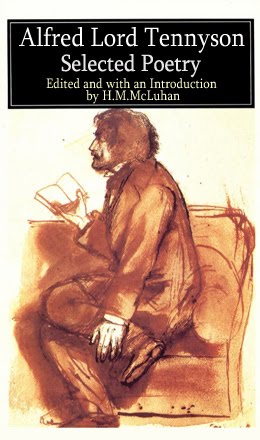

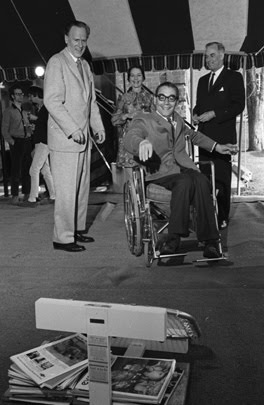




![PICNIC IN SPACE : The Great Minds of Our Time Film Series [1973]](https://blogger.googleusercontent.com/img/b/R29vZ2xl/AVvXsEjyov75DRIUBWcYLkzPYmupFy8CQ9dQ4Q798zDIN6jPNsSdBB_WuOcvPl4WjMAz10csG071oCO3BCUtIcKyHoIkCN0lCy0OxGCV_HrLXrGNKRpUiKMrqzkJh4LSc7jT_KrrqmClapSlVa8/s1600-r/PicnicInSpace.jpg)


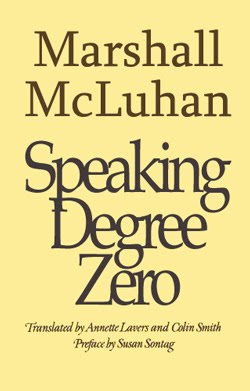

























![more Hidden ground [re:Bride] : the "flippancy" of tone seemed just "right"](https://blogger.googleusercontent.com/img/b/R29vZ2xl/AVvXsEg-hQyF9KGGhKYc73nUGmV1bStJ4fTJVh0-TL1ZtikLZEv5ppjhB3DOhFcVuzGq-kByrwtTAWgCcE173pA3UTIPe7h6xJjsPt7lRvNym007ZsdXenMDLNimKcwtaTOqkGleoxmXOeCKtxXL/s1600-r/LEAVISLEWIS.png)
















![BABA WAWA [TODAY SHOW, Toronto City Hall 1970]](https://blogger.googleusercontent.com/img/b/R29vZ2xl/AVvXsEjTZAIFkA07K36WGk951vmZnLPU99fOdNzlvVhyphenhyphenhKZEKu2n2AW5EA1CDZGaTk0aYRXUv7IOXG39igaikoE6SWm8j7QIG96wYRE54oBXwvlaNCJzp15vdkrcqR97IMMny-8sHjM-VDotTOaY/s1600-r/babaWawa.jpg)

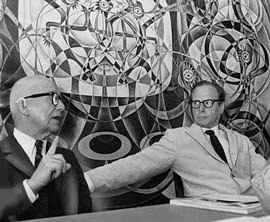

![enter the dragon : "typhon in america" [unpublished]](https://blogger.googleusercontent.com/img/b/R29vZ2xl/AVvXsEjdCnZdJ6JbaLc6hyUmUJo5UJ0m8WZSj_afYU9oRlHKIUgAIfcy2EPHNAptSRYEAmpOf0Xaa0B8iMgOTF302lY0Xmbyne0hvrdRyNo-t0Q-PPdzqX39uI3T5x5FppRPaQf9sSaXytrOpWVN/s1600-r/TIA.jpg)




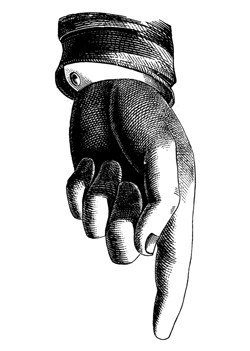






















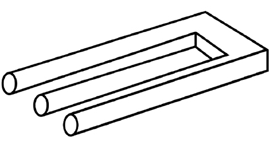









![Take Today [1972] : "the consumer becomes a producer..."](https://blogger.googleusercontent.com/img/b/R29vZ2xl/AVvXsEhA53bdVdTaXdQo1fDmrsI8oiAwF-3jampcanOq8uk3QMh8_ImkNsTiKd4-RnZY8Vbwqh1fymJiyCl1CSLcSonXHQM6XbnJYQi_Vu89gbAV4jVq73EtlbM3w6CthyphenhyphenV_pHEjE6eu_VhC489u/s1600-r/PROSUMER.jpg)
























































































![" Outtragedy of poetscalds!, Acomedy of letters " [ FW 425.24]](https://blogger.googleusercontent.com/img/b/R29vZ2xl/AVvXsEhJMrJLN3oPUb25A2tjQtWZcZxA4wZB0IOvaIAvxosAUqlFc258HHvzvlnHHvKhKq7hG3epo76izY2Bu0HC3Cy-8S46Rf0Wni3L8j8jEfpT7sXK3UFlXBMtN2v2JdrmdxvWk8VWKjkhN4-9/s1600-r/preplexLP.png)











![mars[HAL]9000 : " Tomorrow is our permanent address."](https://blogger.googleusercontent.com/img/b/R29vZ2xl/AVvXsEhmblupqmUiuV3GbyayJiDRGEO63TEgwjHi-i8b0kVYDvXrKFWTCyl-e21la4QJXC4nDFDzx51Omi6fYPLJcqRHFoP6zSsL0CVZF98eMf6mxCE2WDfvMmT4q9G3X45-P0IYGDmliE0fCR3C/s1600-r/marsHAL9000_250.jpg)




























































































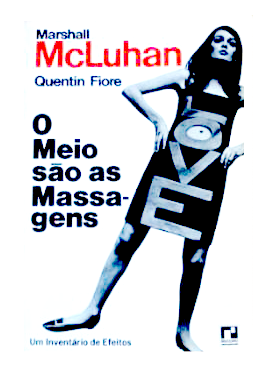





































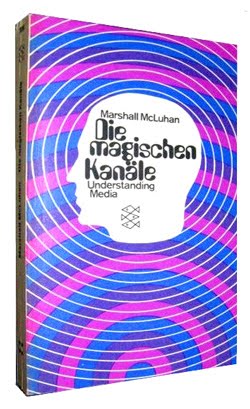







































































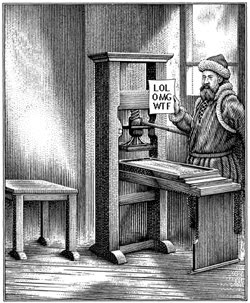








![Lucifer [from Latin] <br>meaning "light-bearer"](https://blogger.googleusercontent.com/img/b/R29vZ2xl/AVvXsEhq-2kZZOfh-Syv1Ewa0Ns2O6ZeP59pcsJp9ihhKcXCaovYZO_cKxffC5iSKOXFHr6E1jiHc6zedt1U6I95831RgpVdm3qk8-9C3y1yPyrCiQe4jgx-DsbeHnjKnw9t6Qx3ZM5TSYxiPj5H/s1600-r/lucifer.png)


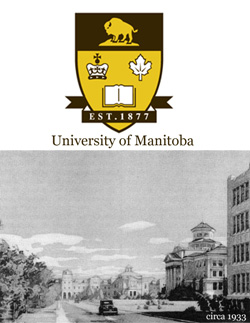










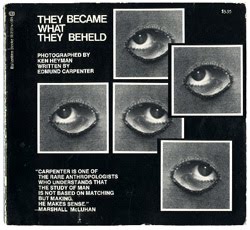






































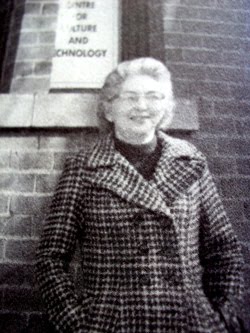









































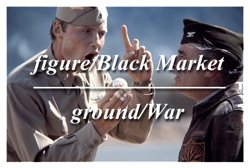






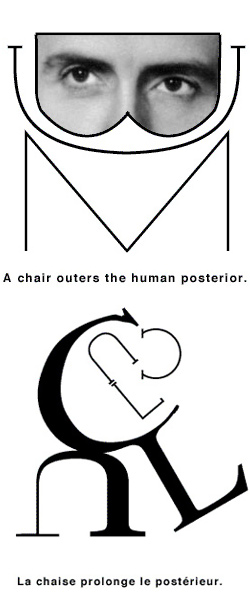






































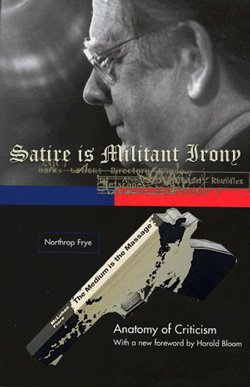























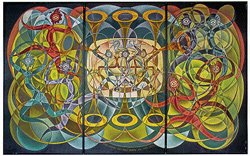










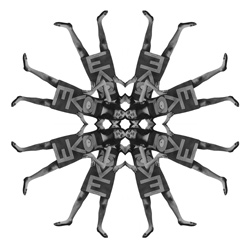





3 comments:
a perfect reader
Marshall McLuhan fonds
[multiple media]
Fonds Consists of: 155 lower level description(s)
Show Arrangement Structure
Date(s): 1871-1987
Extent
43.6 m of textual records.
161 microfilm reels positive and negative.
375 photographs b&w and col.
275 prints offset lithographs, reproductions, photochemical
process prints, serigraph.
17 drawings.
1 watercolour.
1 printing plate stainless steel 8.4 x 47.5 cm.
58 audio cassettes.
29 audio discs.
2 audio reels.
21 film reels.
24 videocassettes.
3 plaques.
2 medals bronze and gold.
Scope and content
The fonds consists of textual records, some microfilm, relating to
Marshall McLuhan's career as a communications scholar. It is divided
into 11 series: Correspondence, which includes nominal correspondence,
fan and crank mail, invitations and recommendations correspondence;
Personal and family series; Manuscripts, which is comprised of
material collected by McLuhan in preparation for his books and
articles; Subject files, pertaining to a variety of topics; Reference
notes; Projects, which includes correspondence, notes and other
material concerning various projects McLuhan worked on or was
interested in; University series, including material relating to the
Centre of Culture and Technology, University of Toronto and student
and personnel records; Manuscripts by other authors; Letters of
Marshall McLuhan, which includes a selection of letters for the single
volume of letters entitled "Letters of Marshall McLuhan", published in
1987; Eric McLuhan material; Books and periodicals. Microfilmed
material is located on microfilm reels H-2038 to H-2080, and reels
H-2083 to H-2201. In addition, there are two microfilmed
dissertations. They were prepared by Edward Arthur Lippman, "Music and
Space"; and Kathleen Swat Hoon Chan, "The Effect of Enhanced Visual
Sensory Input on the Probability of Verbal Response". This material is
located on microfilm reel M-8080.
Fonds also include photographs by the Globe and Mail, Rothmans of Pall
Mall Canada Ltd., and Marshall McLuhan depicting Marshall McLuhan and
wife with Hon. Pierre Elliott Trudeau, Toronto, Ont., 27 November
1970; Marshall McLuhan and wife with Mr. York Wilson, Toronto, Ont.,
ca. 1971; Marshall McLuhan; Roy Campbell; Reverend Malcolm Carron; Tom
Easterbrook; Gerry Feigen; Senator Mike Gravel; Reverend John Mole;
portraits and snapshots of members of the Marshall and McLuhan
families; photographs by Wilson's Studio, Van Dyke Studios, Chapel
Studio, Gauvin Gentzel & Co., W.A. Martel, L.W. Landerson, David L.
Scopick, Louis Forsdale, Banks, Robert J. Fleming & Associates, Castor
Studio, Campbell's Studio, Odette Baclet, and Ashley & Crippen, Robert
Lansdale depicting the family and career of Marshall McLuhan,
including portraits and snapshots; Marshall McLuhan receiving the
President's Cabinet Award, University of Detroit, 1972; group photo
taken at the McLuhan Emergency Strategy Seminar, Nassau, (Bahamas),
January 1970; group photos of Marshall McLuhan with the Vice-President
of the United States, Hubert A. Humphrey, Washington, D.C., November
16th, 1966; group photo taken at the "Mass Media Panel", Grinnell
College, Iowa, 1967; group portrait taken at Commencement, John Fisher
College, June 8th, 1969; portrait of Barrington, Nevitt; photographs
by Time-Life, Tom Wallace, Eaton's, Portrait Studio, Alain Rinfret,
and Jalmar (London, England) depicting the McLuhan family and
professional activities of Marshall McLuhan; conferences in Barcelona
(Spain), 1972, Denver (1973), Venice (Italy) and Venezuela (1976),
Montreal (1977); photos of M. McLuhan receiving award from University
of Detroit, 1972; group portraits with M. McLuhan and different
personalities like Geordie Howe, John Culkin, the American painter
Harley Parker; portraits of Philip Proctor & Peter Bergman, Red
Skelton, Marshall McLuhan, Sir Stafford Beer, Allan Kaprow, Aldo
Tambellini, Nam June Paik, Dick Higgins, Les Levine; photographs of a
variety of paintings and drawings; and a photograph of Marshall
McLuhan with Ed Robeneck, Red River, Man., ca. 1928.
Fonds also includes artistic material as follows: posters, prints and
cartoons advertising Canadian and international performing and fine
arts events; a stainless steel printing plate entitled "The structural
effect/ McLuhanism"; Canadian postcard views; images including that of
Nictaux Falls; Annapolis River; Port George; Grand Pre; Evangeline;
Bear River; Digsby; Victoria, B.C.; and several images of Nova Scotia;
cartoons by Joseph Mirachi and Andy Capp; a silkscreen cover design
for "The Medium is the Message"; drawings of various locales in
Toronto prepared by McLuhan; a cover design for "Voices of
Literature"; a cover design for "Explorations: Verbi-voco-visual; and
artwork boards for the Dewline project.
Fonds also includes moving images and sound recordings divided into
two media specific series entitled: Sound recordings; Moving images.
Fonds also includes objects as follows: the Religious Education
Society plaque awarded to Dr. McLuhan; New York University of
Education Award plaque; La Sociedad de Alumnos de la Licenciature en
Ciercias de La Comunicacion del I.T.E.S.M. plaque; City of Toronto
Award of Merit medal; and America's First Domestic Communications
Satellite medal.
Conditions of Access
Graphic (art) 99: To be determined
Graphic (photo) 90: Open
Moving images (film) 90: Open
Moving images (video) 90: Open
Object 90: Open
Sound recordings 90: Open
Textual records 18: Restricted by creator/donor
Textual records: microform 18: Restricted by creator/donor
Textual records: microform
(Microfilm reel) M-8080 Restrictions not set
Textual records: microform
from container
(Microfilm reel) H-2038 to H-2080 Restrictions not set
Textual records: microform
from container
(Microfilm reel) H-2083 to H-2201 Restrictions not set
Terms of use
Photographs:No restrictions on use. Various copyrights.
Artistic material:Terms of use for accession 1984-092 (PIC) to be
determined. Copyright remains unknown. Credit: National Archives of
Canada.
Artistic material:No restrictions on use for accession 1988-017 (PIC)
and 1987-094 (PIC). Copyright expired for accession 1988-017. Various
copyrights exist for accession 1987-094. Credit: National Archives of
Canada.
Sound recordings:No restrictions on use. Reproduction only with
permission of copyright owner. No donor restriction except for
material in accession 1985-0166 (MISA).
Moving images:No restrictions on use. Reproduction only with
permission of copyright owner. No donor restrictions.
Objects:No restrictions on use. Various copyrights. Credit: National
Archives of Canada.
Creator(s) / Provenance: McLuhan, Marshall,1911-1980
Biography / Administrative History
Herbert Marshall McLuhan was born in Edmonton, Alberta on 21 July 1911
to Herbert Ernest McLuhan, a salesman, and Elsie Naomi (Hall) McLuhan,
an actress and monologist. The family moved to Winnipeg, where McLuhan
attended the University of Manitoba from 1929 to 1934, receiving a
Bachelor of Arts and a Master of Arts in English literature. He
received his doctorate in English literature from Cambridge University
in 1942, the topic of his dissertation being "The Place of Thomas
Nashe in the Learning of His Time."
After teaching English at various American universities, McLuhan
returned to Canada in 1944 to teach at Assumption College in Windsor.
From 1946 until shortly before his death, he taught English at St.
Michael's College, University of Toronto. From 1953 to 1955 he
directed a seminar on culture and communications that was sponsored by
the Ford Foundation. In addition to his teaching work, he co-edited
with anthropologist Edmund Carpenter a periodical called
"Explorations" from 1953 to 1959. He later directed a media project
for the United States Office of Education and the National Association
of Educational Broadcasters (1959-1960) titled "Understanding New
Media".
In 1963, McLuhan became the director of the University of Toronto's
newly-established Centre for Culture and Technology. The Centre
conducted research on questions of sensory perception and other
communications-related issues and offered academic courses.
In December 1966, McLuhan was appointed to the Albert Schweitzer Chair
in Humanities at Fordham University in New York City, a post he held
for the 1967-1968 academic year. In 1970, McLuhan became a Companion
of the Order of Canada.
McLuhan's books include the following: "The Mechanical Bride: The
Folklore of Industrial Man" (1951); "The Gutenberg Galaxy: The Making
of Typographic Man" (1962), for which he was awarded the Governor
General's prize for critical prose; "Understanding Media: The
Extensions of Man" (1964); "The Medium is the Massage" (1967), written
with Quentin Fiore; "War and Peace in the Global Village" (1968), also
written with Quentin Fiore; "Through the Vanishing Point: Space in
Poetry and Painting" (1968), co-authored with Harley Parker;
"Counterblast" (1969); also written with Harley Parker; "Culture is
Our Business" (1970); "From Cliché to Archetype" (1970), written with
Wilfred Watson; "Take Today: The Executive as Dropout" (1972), written
with Barrington Nevitt; and "The City as Classroom" co-authored by
McLuhan, his son Eric McLuhan, and Kathryn Hutchon in 1977.
In addition to these works, McLuhan had a volume of his literary
criticism published in 1969, titled "The Interior Landscape: Selected
Literary Criticism", and edited by Eugene McNamara. He also co-edited,
with Edmund Carpenter, a volume of essays compiled from the
Explorations periodical, titled "Explorations in
Communications" (1960). McLuhan's only book-length work of literary
criticism is his 1956 edition of the poetry of Alfred Lord Tennyson,
titled "Selected Poetry of Tennyson".
In addition to these works, McLuhan wrote hundreds of articles, was
interviewed for numerous journals and popular magazines, and delivered
many lectures and informal talks on a variety of topics. He also
edited an information letter, "The Dew Line."
Finding aid
Textual records MSS1645 (Electronic)Restrictions not set
p000000288.pdf
The Finding Aid is a descriptive file list of volumes 1 to 228.
Graphic material (Electronic)Restrictions not set
Refer to MINISIS for item-level descriptions.
Artistic material (Paper)Restrictions not set
Finding aid is an item-level descriptive list for accession 1984-092
(PIC) located in binder #47 for items 1-56 and in the Art Division
accession file for items 21-264.
Audio-visual material (Electronic)Restrictions not set
Refer to MINISIS for item-level descriptions.
Audio-visual material (Paper)Restrictions not set
Refer to AV Collection file for additional information.
Objects (Electronic)Restrictions not set
Refer to MINISIS for item-level descriptions.
Objects (Paper)Restrictions not set
See Medal inventory cards: 12700 to 12704, Art Division.
Reference Numbers
Former archival reference no.: MG31-D156
Archival reference no.: R7593-0-1-E
Microfilm reel: M-8080
Microfilm reel: H-2038 to H-2080
Microfilm reel: H-2083 to H-2201
Additional Information
The Marshall McLuhan papers and audio-visual material was acquired in
1984 from his widow, Corinne McLuhan. Papers relating to the book
Letters of Marshall McLuhan were acquired in 1988 from Mrs. M.
Molinaro. One audio reel was acquired in 1988 from Lynda Ashley.
Associated material note
Sound recordings documenting an interview with McLuhan and French
author Nina Sutton provide support for the papers of Marshall McLuhan
located in MG31-D156.
Subject heading
H. Marshall McLuhan - Diaries n.d. [1871 1897-1981] Dew Line n.d.
[19311933-1981]
H. Marshall McLuhan - Manuscripts n.d. 1935-1982 Explorationa n.d.
[1931 1933-1981]
Authors Canadian n.d. 1871-1982 Centre of Culture and Technology
(Toronto Ont.) n.d. 1938-1980
Authors Canadian - Biography n.d. 1871-1982 University of Toronto.
Department of English n.d. 1938-1980
Authors Canadian - Diaries n.d. [1871 1897-1981] Eric Mcluhan n.d.
1947 1965-1980
Authors and publishers - Canada n.d. [1871-1982] Letters of Marshall
McLuhan 1944-1962 1985-1987
Books - Canada n.d. [1871-1982] Oxford University Press [1985-1987]
Clippings (Books newspapers etc.) n.d. 1935-1982 Matie Molinaro
[1944-1962 1985-1987]
Lectures an lecturing - Canada n.d. [1935-1982] McLuhan: A Life of
Letters [944-1962 1985-1987]
Applications for positions n.d. [1935-1982] Corinne McLuhan 1944-1962
1985-1987
Research grants - Canada n.d. [1935-1982] William Toye 1944-1962
1985-1987
Research - Canada n.d. 1935-1982 Father Walter J. Ong 1944-1962
Editors - Canada n.d. [1931] 1933-1981
Publishers and publishing - Canada n.d. [1931] 1933-1981
Bibliography - Canada n.d. [1931] 1933-1981
Consultants - Canada n.d. 1951-1981
Poetry n.d. [1926-1981]
Manuscripts - Canada n.d. 1926-1982
Universities and colleges - Canada - Faculty n.d. 1938-1980
University of Toronto (Toronto Ont.) - Faculty n.d. 1938-1980
Universities and colleges - History n.d. 1938-1980
English - Instruction and teaching n.d. 1938-1980
Literature - Study and teaching n.d. 1938-1980
University of Toronto (Toronto Ont.) - Students n.d. 1938-1980
Centre of Culture and Technology - Administration n.d. 1938-1980
Periodicals n.d. [1931] 1933-1981
Language of material
English
Added language of material
German, French, English
Source.
Private
Related control no.
1984-021 MED
1984-0224 MISA
1984-092 PIC
1985-0166 MISA
1985-076 NPC
1986-188 NPC
1987-0422 MISA
1987-094 PIC
1988-017 PIC
1988-022 NPC
1988-0302 MISA
1988-0333 MISA
1988-0481 MISA
MG31-D156
Other system control no.:
MAINS16110
MIKAN No.
98306}
And the inventory of manuscripts:
http://data2.archives.ca/pdf/pdf001/p000000288.pdf
4. Each technological extension involves an act of collective cannibalism. The previous environment with all its private and social values, is swallowed by the new environment and reprocessed for whatever values are digestible. Thus, Nature was succeeded by the mechanical environment and became what we call the “content” of the new industrial environment. That is, Nature became a vessel of aesthetic and spiritual values. Again and again the old environment is upgraded into an art form while the new conditions are regarded as corrupt and degrading. Artists, being experts in sensory awareness, tend to concentrate on the environmental as the challenging and dangerous situation. That is why they may seem to be “ahead of their time.” Actually, they alone have the resources and temerity to live in immediate contact with the environment of their age. More timid people prefer to accept the content, the previous environment’s values, as the continuing reality of their time. Our natural bias is to accept the new gimmick (automaton, say) as a thing that can be accommodated in the old ethical order.
Post a Comment